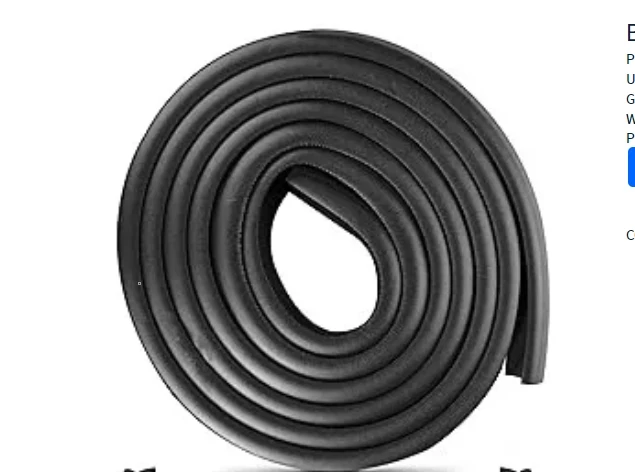Suitable Rubber Seal for Bottom of Garage Doors for Enhanced Protection and Durability
The Importance of a Bottom Garage Door Rubber Seal
When it comes to maintaining the efficiency and functionality of your garage door, one of the most critical components to consider is the bottom garage door rubber seal. This often-overlooked feature serves several essential purposes that contribute not only to the protection and longevity of your garage door but also to the overall safety and comfort of your home.
What is a Bottom Garage Door Rubber Seal?
The bottom garage door rubber seal is a flexible strip made from durable rubber material that is installed at the base of your garage door. Its primary function is to fill the gap between the garage door and the floor, creating a barrier against various external elements. Over time, these seals can wear down due to exposure to harsh weather conditions, dirt, and regular wear and tear, necessitating periodic inspection and replacement.
Key Benefits of a Bottom Garage Door Rubber Seal
1. Weatherproofing One of the most significant advantages of installing a bottom garage door rubber seal is its ability to create a nearly airtight and waterproof barrier. This helps prevent rainwater, snow, and cold air from entering your garage, which is especially important in climates with extreme weather changes. A well-sealed garage can reduce energy costs by maintaining a consistent temperature, which is crucial if you use the garage for work or recreation.
2. Energy Efficiency By keeping drafts and outdoor temperatures at bay, a bottom rubber seal can enhance the energy efficiency of your home. A seal that fits properly ensures that you won’t experience significant heat loss in winter or excessive heat gain in summer, leading to lower heating and cooling costs.
3. Pest Control A bottom seal also serves as a barrier against pests and insects. Mice, spiders, and other critters can easily enter through gaps under the garage door, but a well-fitted rubber seal acts as a deterrent, keeping your garage pest-free. This not only protects your belongings, such as tools and outdoor equipment but also maintains a cleaner environment.
bottom garage door rubber seal

4. Debris Protection Over time, leaves, dirt, and other debris can accumulate inside your garage, especially if the door doesn’t close tightly. The rubber seal prevents this by blocking these materials from entering, making it easier to keep the garage clean and organized.
5. Noise Reduction If your garage is adjacent to living areas, sounds from the outside can be a nuisance. A well-installed rubber seal aids in noise reduction, minimizing the impact of sounds such as traffic, wind, and other disturbances, making your garage a more pleasant space.
Installation and Maintenance
Installing a bottom garage door rubber seal is typically a straightforward process that can be handled as a DIY project or with the help of a professional. The first step involves measuring the width of the garage door to ensure you purchase the correct size of the seal. It’s essential to choose a high-quality product that can withstand varying temperatures and outdoor conditions.
For maintenance, regular inspections should be conducted to check for signs of wear, such as cracks or fraying. If damage is detected, replacing the seal promptly will ensure that your garage remains protected and efficient. Cleaning the seal periodically makes it last longer and maintains its effectiveness; simply wipe it down to remove dirt and grime.
Conclusion
In summary, while often taken for granted, the bottom garage door rubber seal plays a vital role in safeguarding your home against the elements, pests, and debris. By investing in a high-quality seal and maintaining it properly, homeowners can enjoy a more comfortable and efficient living space. Protecting your garage with an effective rubber seal is undoubtedly a small but significant step towards enhancing your overall home.
-
Under Door Draught Stopper: Essential ProtectionNewsJul.31,2025
-
Garage Door Seal and Weatherstrips for ProtectionNewsJul.31,2025
-
Edge Banding Tape for Perfect EdgesNewsJul.31,2025
-
Table Corner Guards and Wall Corner ProtectorsNewsJul.31,2025
-
Stair Nose Edging Trim and Tile Stair SolutionsNewsJul.31,2025
-
Truck Bed Rubber Mats for Pickup BedsNewsJul.31,2025
-
Window Weather Stripping for Noise ReductionNewsJul.29,2025